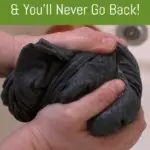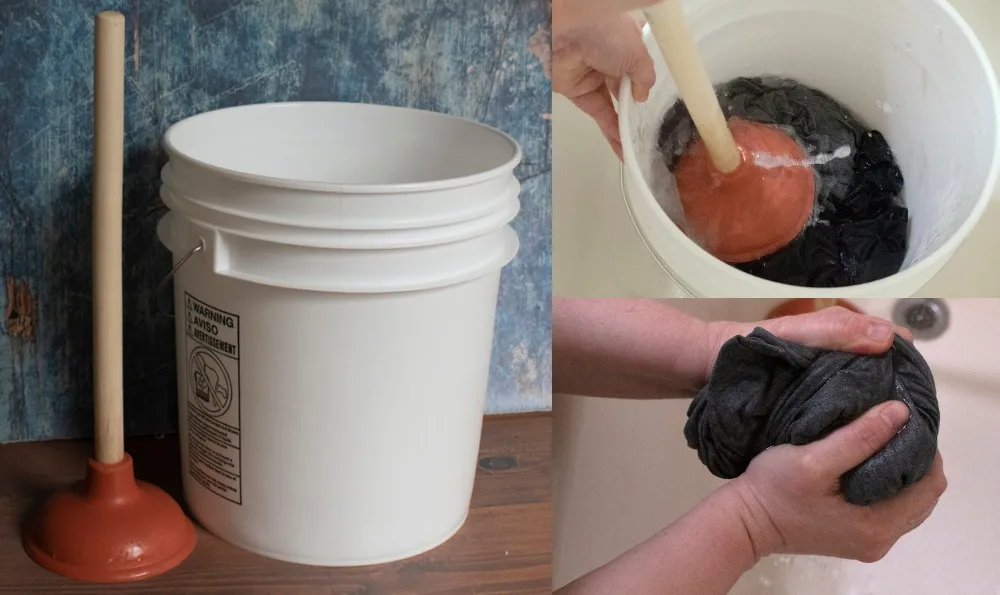
When you think about washing clothes by hand, you probably conjure up images of someone in a calico dress scrubbing furiously on a washboard, up to their elbows in hot, soapy water.
Nah, it’s not that bad.
Getting clothes clean without a washing machine isn’t hard.
It’s not even all that time-consuming. It just requires a little know-how and planning. You may also be surprised to see that your clothes are cleaner when washed by hand.
When I started washing my clothes by hand, I was shocked at the amount of leftover soap in them from my old washing machine.
The first few times I did laundry, I didn’t even need to add soap because there was still so much residual detergent on my clothes. Yuck!
One thing I’ve learned in my self-sufficiency adventures is that modern life has given us convenience over quality. Nothing beats the soft, creamy bubbles from a bar of homemade castile soap. Freshly made yogurt is by far better than anything you can buy at your local supermarket. And hand-washed clothes actually get clean instead of just swirled around in detergent for an hour.
But Tracey, it’s so much easier to chuck my clothes in the washing machine, why would I want to wash my clothes by hand?
There’s plenty of reasons to wash your clothes by hand.
- Maybe your washing machine is broke, and the repairman can’t get to it right away.
- Perhaps you moved into an apartment with no washer and dryer hookups, and you don’t want to deal with the laundromat. (Because let’s face it, laundromat machines are gross.)
- Maybe there’s a power outage.
- Perhaps you’re looking to simplify your life, or save water.
In any case, knowing how to wash your clothes by hand is an excellent skill to have.
Before we begin here are a few tips
- Washing clothes by hand is a lot like baking cookies – it takes a little time and prep work to get started, but most of the actual time involved is inactive hands-off time. I try to wash my clothes when I’m busy doing other household tasks or when I’m in for the evening, so I can do other things while my clothes are soaking or draining.
- Doing your laundry this way means you can’t let it pile up for two weeks and then play catch up. You’ll be washing much smaller loads, so try to wash one load a day or pick one day every week and make that laundry day.
- If you’re messy like me, attend to dribbles and spots on your clothes as soon as they happen. This will lessen the likelihood that they stain.
- When you are first switching over to washing your clothes by hand, don’t add detergent. You may be surprised (and a little freaked out) to see that there is plenty of leftover detergent still in your clothing. Once you start agitating the clothes, if the water is still pretty clear, then go ahead and add soap. Again, this is only when you are first moving from a washing machine to washing by hand.
- I find it most comfortable to set up and wash clothes right in my bathtub. That way, if I slosh water out of my bucket, it’s no big deal. And it makes filling and rinsing so much easier.
Okay! Let’s do some laundry.
First things first, you need a new washing machine. And, you can replace your old one for just $12 and a trip to the hardware store.
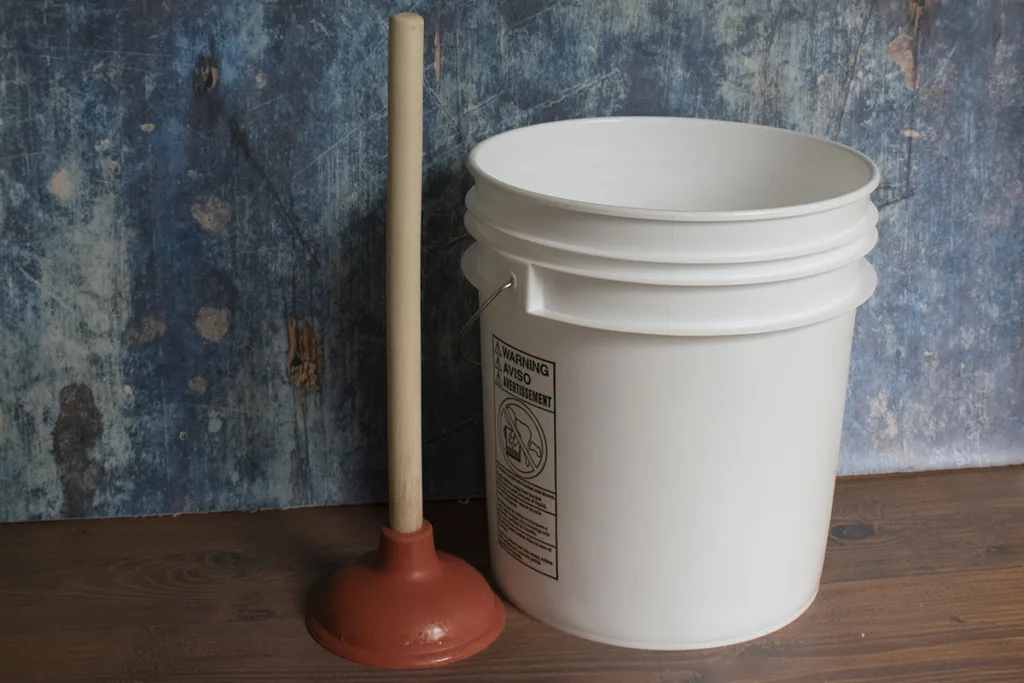
Yup, that’s right, a 5-gallon bucket and a plunger are all you need to get your laundry done.
Use a clean bucket and plunger. I highly suggest purchasing a new plunger to use only for laundry for the obvious reasons. You want a good old-fashioned rubber plunger that screws onto the wooden handle. This will be your agitator.
Before you get started, see to any spots on clothing that need a little extra attention.
I use several items for spot-treating clothing, depending on what I’ve spilled on it.
A mix of peroxide and dish soap (2:1 ratio) makes a great all-purpose laundry stain remover. And I’ve yet to find a stain that Fels Naptha can’t get out. I’ll even use a plain bar of castile soap if it’s what’s handy.
Wet the spot with warm water and then rub whatever spot treatment you are using on it. I will use an old toothbrush on harder wearing items like denim, but for most clothes, a toothbrush is too abrasive. For scrubbing spots on clothes, I use these little nubby silicone scrubbers.
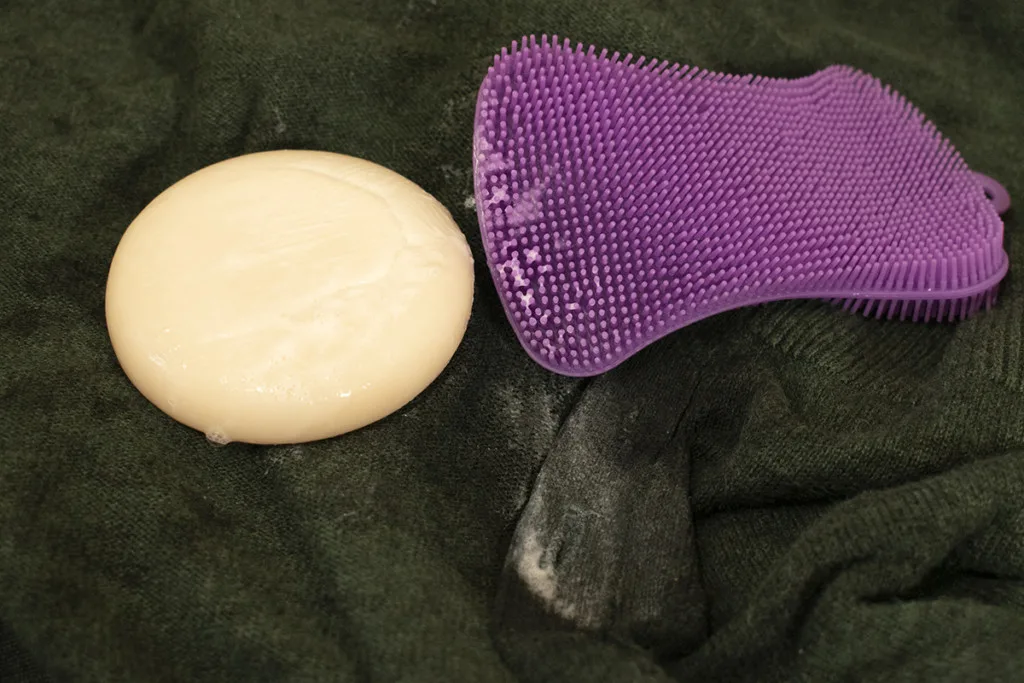
They are gentle on even my most delicate fabrics but do a great job of working the soap into the fabric. (These silicone scrubbers are also great for washing fruit and veggies.)
Once you have dealt with any spots, you can load up your bucket.
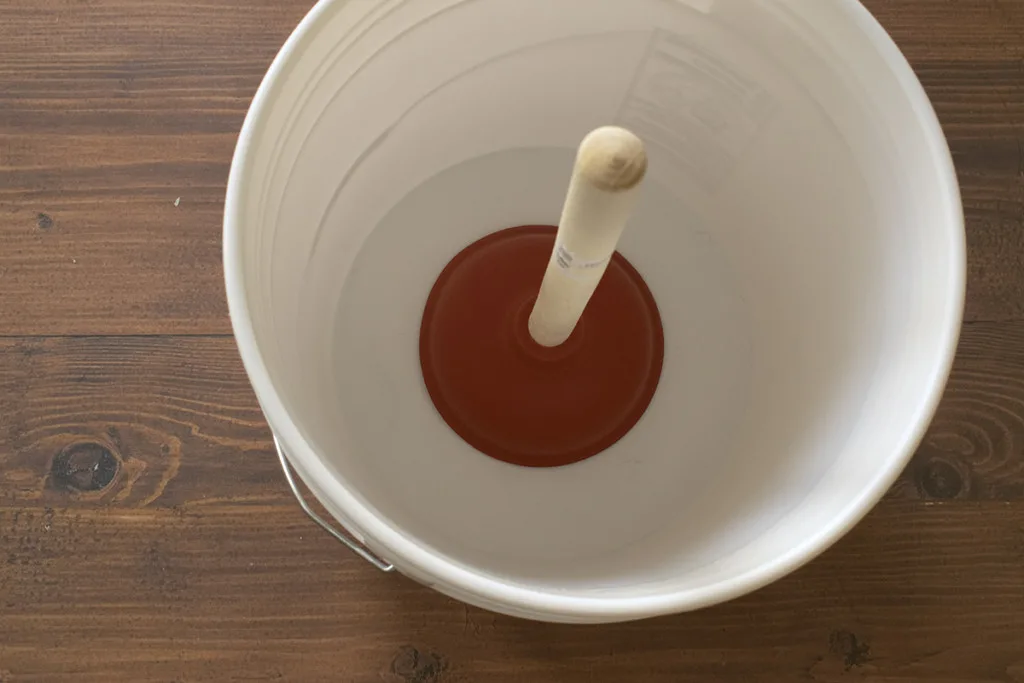
I usually put the plunger in first and load the clothes around it.
I try to keep the level of clothes to about ½ to 2/3 of the bucket, loosely packed. You want to leave room for sloshing them around.
Add your detergent or soap.
Do NOT use a lot of detergent. For a typical bucket load, I only add around two to three teaspoons of detergent. Yup, that’s it.
We have a habit of using way too much detergent because we associate suds with cleaning. If you see a lot of suds when you’re washing, you’re using too much detergent.
Did you know that most commercial laundry detergents don’t create suds naturally? Many of them have additives to make them foam because we somehow got it into our heads that suds = clean.
If you want to avoid harsh chemical detergents altogether, consider giving soap nuts a try. They’re a great natural alternative.
Now fill your bucket with water at the appropriate temperature for the clothes you are washing.
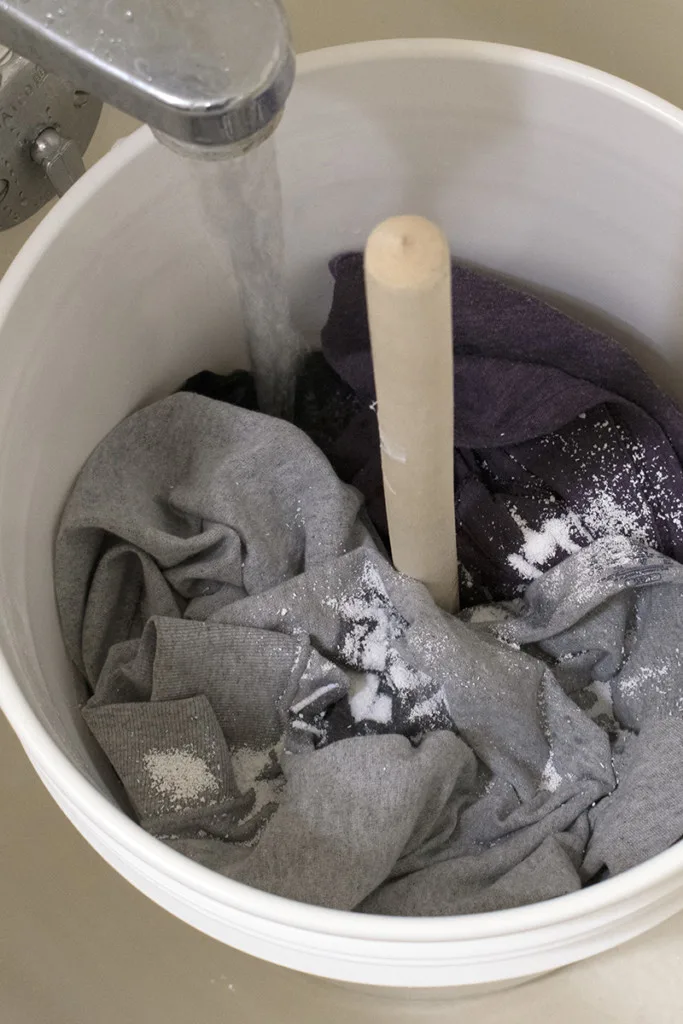
You want the clothes to be covered by about an inch or two of water. You should be able to slosh the clothes around easily, but you don’t want to fill the bucket completely.
Start plunging.
You’ll be surprised to find that the plunger will create suction on the clothes – this is good! You’re drawing the water and soap through the fabric.
I try to keep a good steady pace moving the plunger up and down, while gently stirring the clothes a bit. I’ll also pull the plunger up out of the water to shift the load of clothes around.
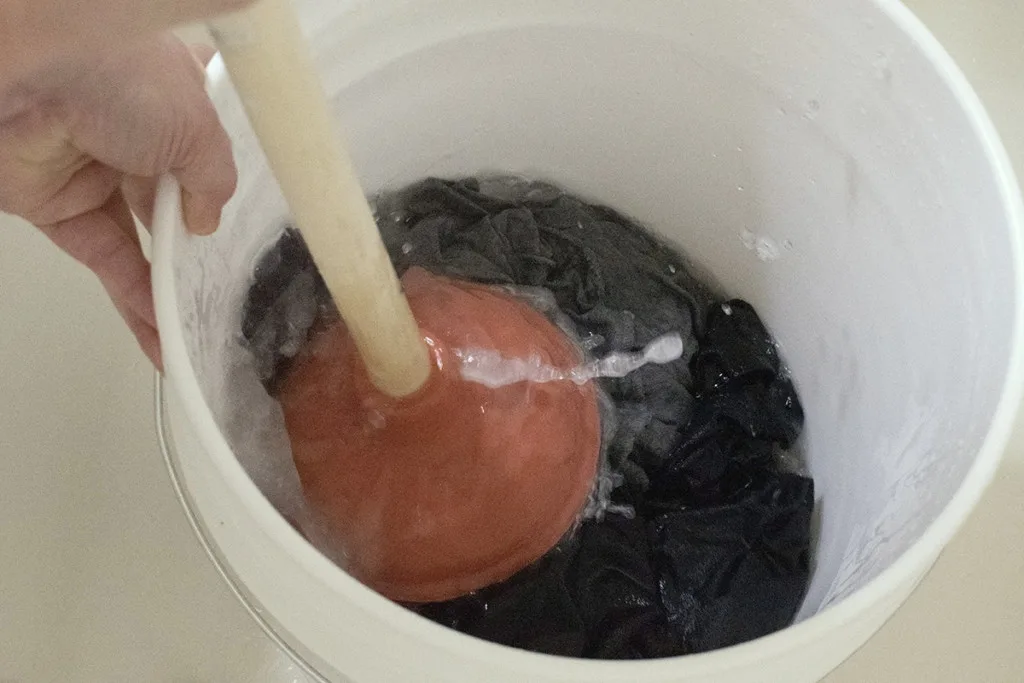
Keep at it for about five minutes.
You don’t have to go crazy and break a sweat doing this. Just keep a good steady motion that effectively agitates the clothes. You shouldn’t be slopping water out everywhere.
After five minutes of agitating the clothes, let them soak for fifteen to twenty minutes while you do something else. I usually set a timer because I’m forgetful.
If there were any stains, now is when I usually check on them and give them an extra scrub if needed.
After the fifteen minutes is up, come back and give the clothes another quick stir, then tip the bucket over in the tub to drain. Let the bucket of clothes sit on its side for another fifteen minutes draining.
Now we’re going to rinse.
Mostly, it’s the same as washing only we won’t be adding detergent, and we’re going to add cold water this time. You don’t have to agitate the clothes with the plunger as long, a couple of minutes should suffice. Tip your bucket out to drain when you’re done; you don’t need to let it soak.
Depending on how dirty the clothes were, you may wish to rinse them one more time.
When you’ve finished rinsing, let the clothes sit in the tipped over bucket and drain for about fifteen minutes.
Squeeze the water out from each item of clothing individually.
You never want to ring or twist your clothing as you can stretch out the fabric. Just ball it up in your hand and give it a good squeeze.
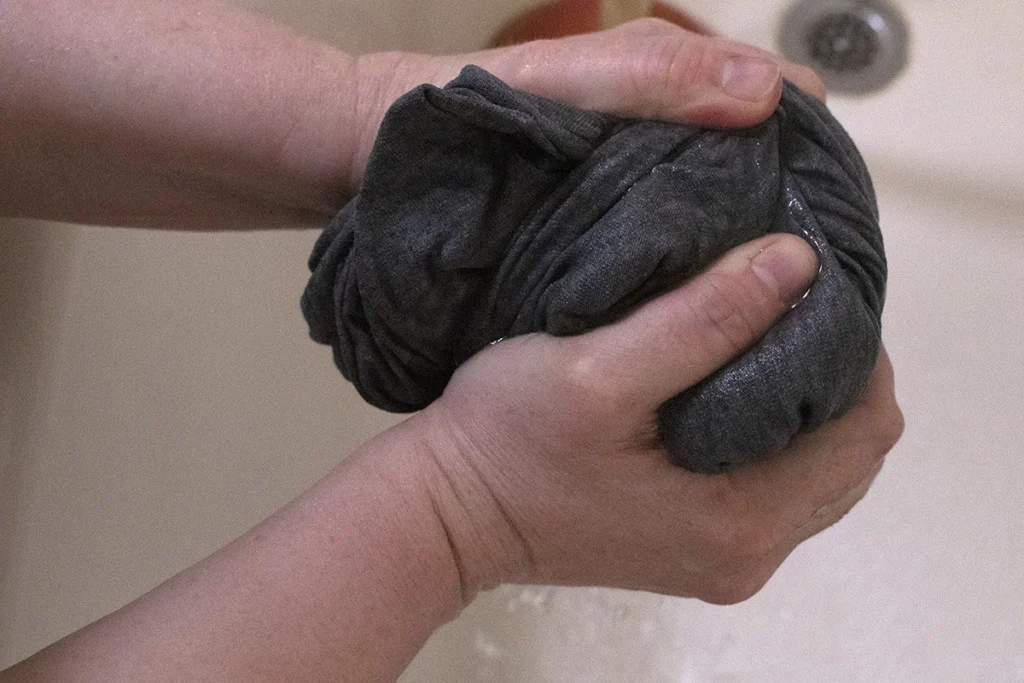
For items that tend to hold more water, such as sweaters and jeans, squeeze as much water out as you can by hand. Then sandwich them between two towels, roll the towels up and press firmly. This will help get out excess water.
Hang your clothes to dry.
Once you have finished extracting as much water from your clothes as you can shake them out gently and hang them to dry, my personal choice is hanging clothes outside on the line, but that’s not always an option.
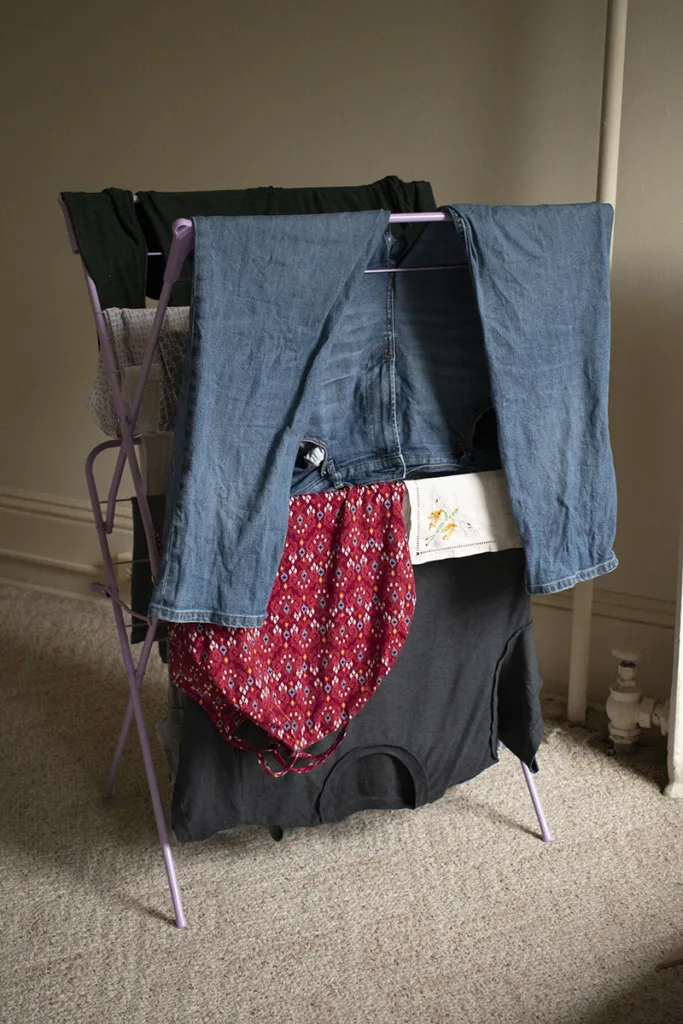
For indoor drying, I have a foldable clothing rack and a few stackable sweater racks that come in handy.
I have a good friend who said one of the smartest things she ever did was put an indoor retractable clothesline in her house.
I like to put my clothing rack next to the radiator, or if it’s something that might drip, I’ll set it up in the tub to dry.
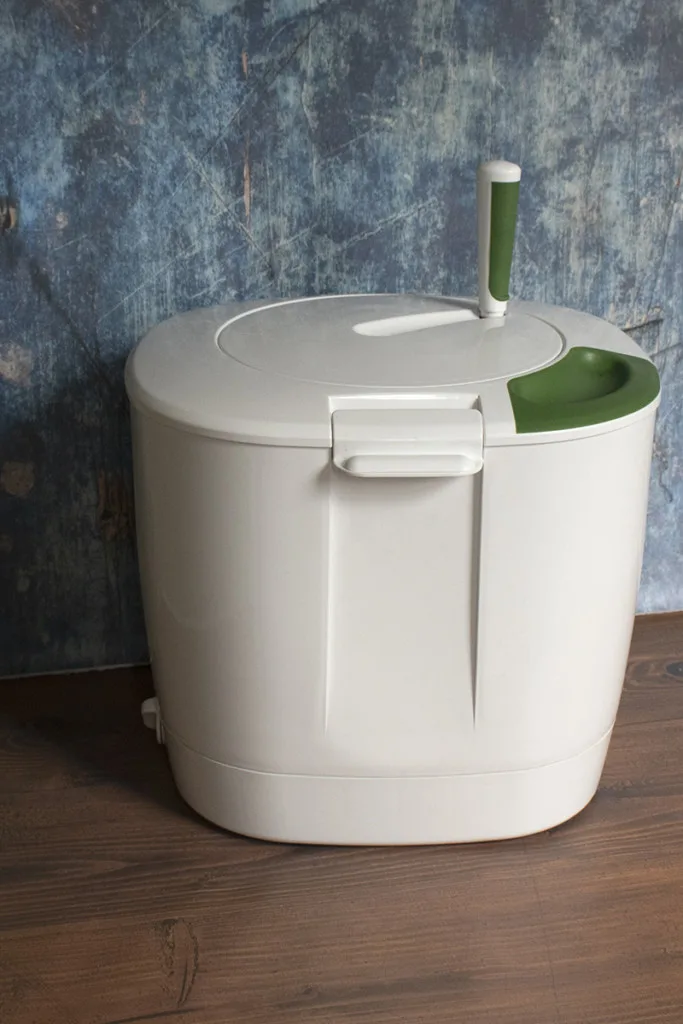
I also purchased a Laundry POD.
To be honest, I don’t think it’s great on its own for washing clothes. The motion of spinning clothes around in a circle drives the water outward, like a centrifuge, not into the clothing.
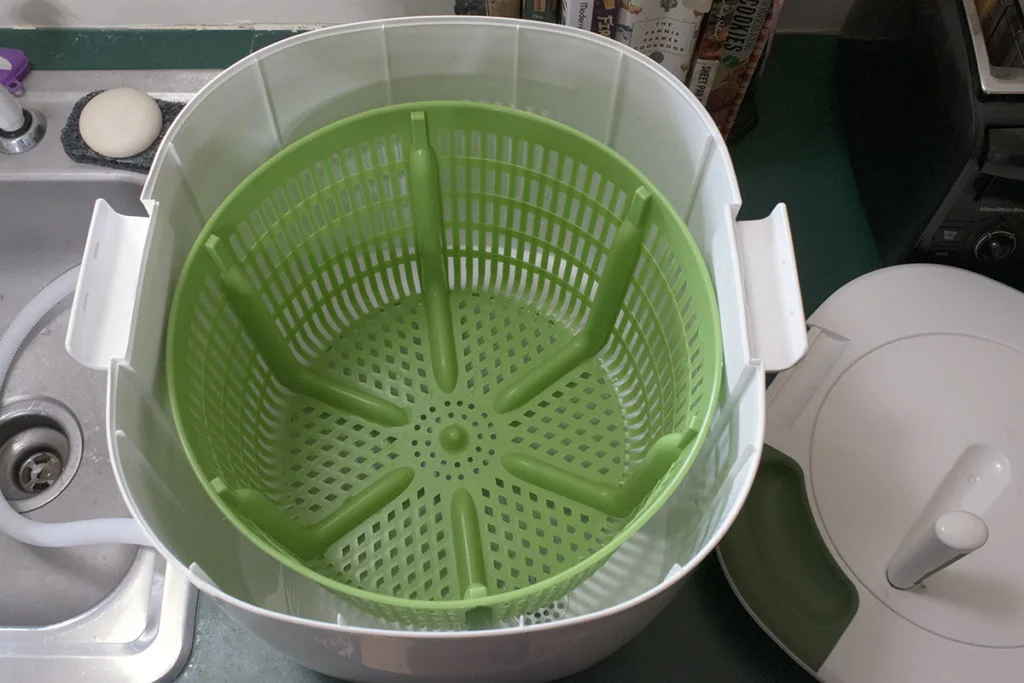
That being said, I would still recommend it if you plan on washing your clothes by hand exclusively; here’s why.
The Laundry POD does a pretty good job for delicate items like sweaters and bras, etc. I’m a knitter, and l have a ton of knitwear. The Laundry POD handles these delicate items beautifully.
I also think it’s worth the purchase price if you only use it to spin your clothes. It’s basically a giant salad spinner. (And I suppose you could use it for that too!)
I set mine up in the tub and use it to spin out water from my clothes, which means they dry faster.
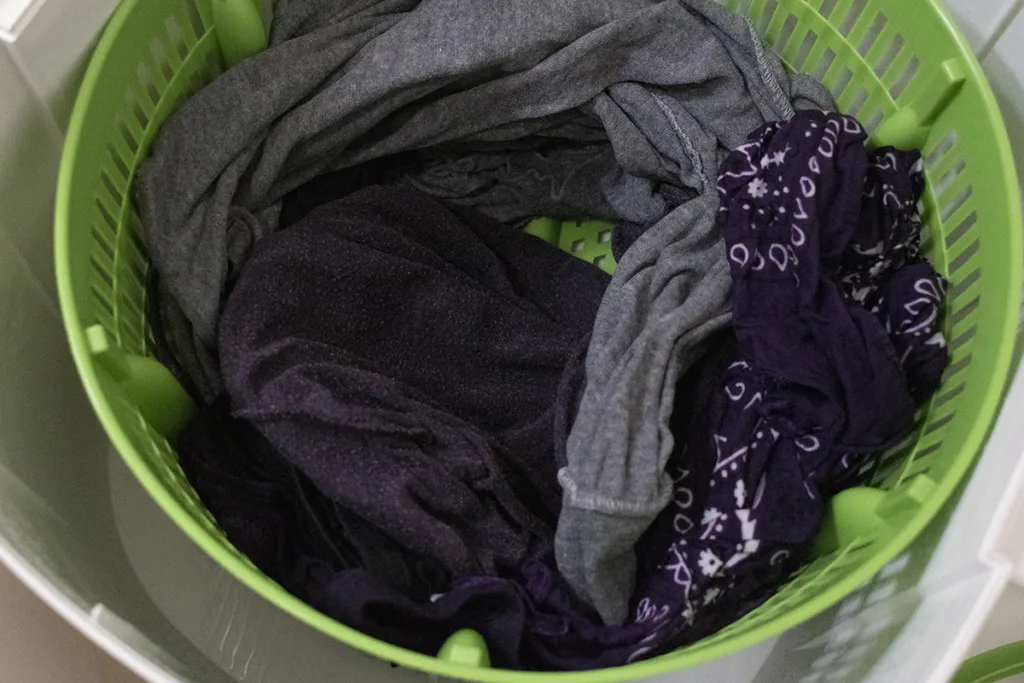
The Laundry POD gets some not-so-great reviews online, but overall I think it’s pretty handy to have.
Take a look and see if it’s for you here.
So, there you go.
See? Hand washing your clothes is pretty simple.
When I had to give up the convenience of my washer and dryer, I was worried about how labor-intensive this whole process would be.
As you can see, it’s pretty easy. And as an added benefit, my clothes look and feel better since I’ve started hand-washing them—just another case to be made for being more self-sufficient.

Get the famous Rural Sprout newsletter delivered to your inbox.
Including Sunday musings from our editor, Tracey, as well as “What’s Up Wednesday” our roundup of what’s in season and new article updates and alerts.


